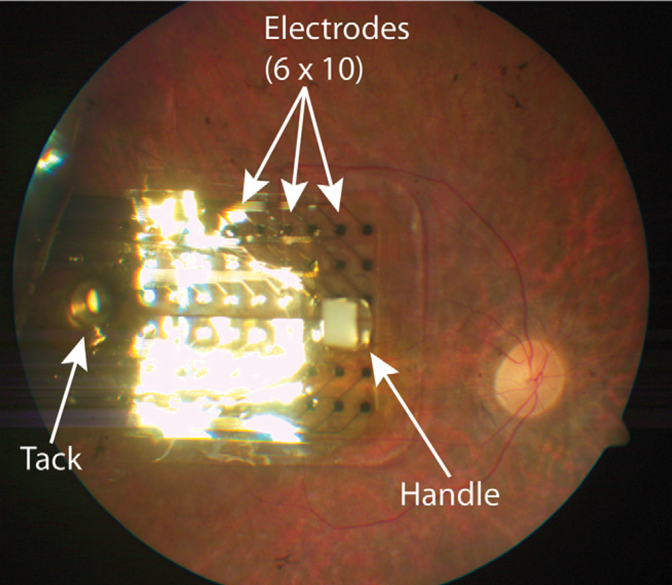By Alexandra Demetriou
For half a century, the surgical technique known as pars plana vitrectomy has stood as a hallmark of ocular surgery. Pars plana vitrectomy is the process by which a surgeon removes a small volume of ocular fluid, called the vitreous, through a region of the eye known as the pars plana. Removing the vitreous allows retinal surgeons to repair retinal damage, treat retinal diseases and, in certain instances of trauma, remove blood or a foreign body from within the eye.
This intraocular technique revolutionized eye surgery, and over the past 50 years numerous surgical and biomedical engineering advancements have continually refined the approach to increase its safety and efficiency. In a recent analysis published in Ophthalmology Retina that catalogs the 100 most cited articles on pars plana vitrectomy, Mark Humayun, MD, PhD, ranks among the top innovators––out of the twelve highest ranked articles, he coauthored four.

Humayun, who serves as director of the USC Dr. Allen and Charlotte Ginsburg Institute for Biomedical Therapeutics and co-director of the USC Roski Eye Institute, reached the top echelon of this list for his contributions to developing a microsurgical instrument system that obviates the need for suturing the eye wall (sclera) after performing retinal surgery. He was also recognized for his pioneering work to establish a retinal implant that partially restores vision to blind patients.
Three out of Humayun’s four top-ranking publications center on a transconjunctival sutureless vitrectomy system (TSV) composed of 25-gauge instruments and accompanying tubes called cannulas through which the instruments are inserted into the eye. Prior to this system, most vitreoretinal surgeons regularly used larger 20-gauge surgical instruments that left behind incisions in the sclera requiring suturing. Their added bulk also traumatized the ocular tissue and resulted in longer recovery times for patients. Humayun and his colleagues Gildo Fujii, MD, and Eugene de Juan, MD, shared their 25-gauge system with the medical community in 2002 and offered surgeons a toolkit that decreased tissue damage, operating times and patient recovery times, all while leaving behind self-sealing incisions. Today, that publication ranks as the fourth most cited of all vitrectomy articles, and their paper discussing their initial experiences using the TSV system ranks sixth. Their follow-up study tracking the outcomes of 140 consecutive cases of 25-gauge transconjunctival surgery for diseases of the back of the eye ranks twelfth.
Humayun’s work appears a fourth time amongst the top twelve articles for his invention and implementation of the Argus II retinal prosthesis, which partially restores vision to blind patients. The device sits inside the eye, attached to the retina, and is implanted via a pars plana vitrectomy approach.
In 2012, Humayun and his colleagues published clinical trial results demonstrating that the device enabled previously blind patients to locate objects, sense motion and detect the orientation of angled, moving lines on a computer screen. The Argus II prosthesis was a groundbreaking invention that ranks eighth amongst the most cited vitrectomy publications, and its development earned Humayun the National Medal of Technology & Innovation from President Obama in 2016.
“It is great to know that our publications on the TSV system and the Argus II prosthesis are some of the most cited articles in the field of ophthalmology,” Humayun says. “I feel privileged to have worked with such excellent collaborators to impact the lives of countless patients, and I look forward to new opportunities to continue driving innovation in our field.”